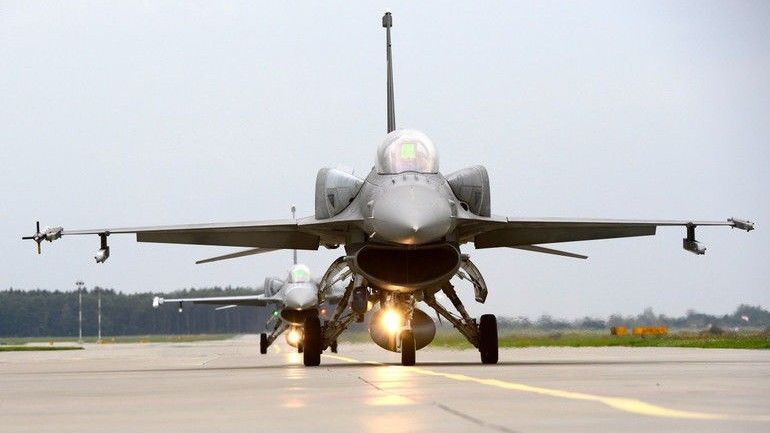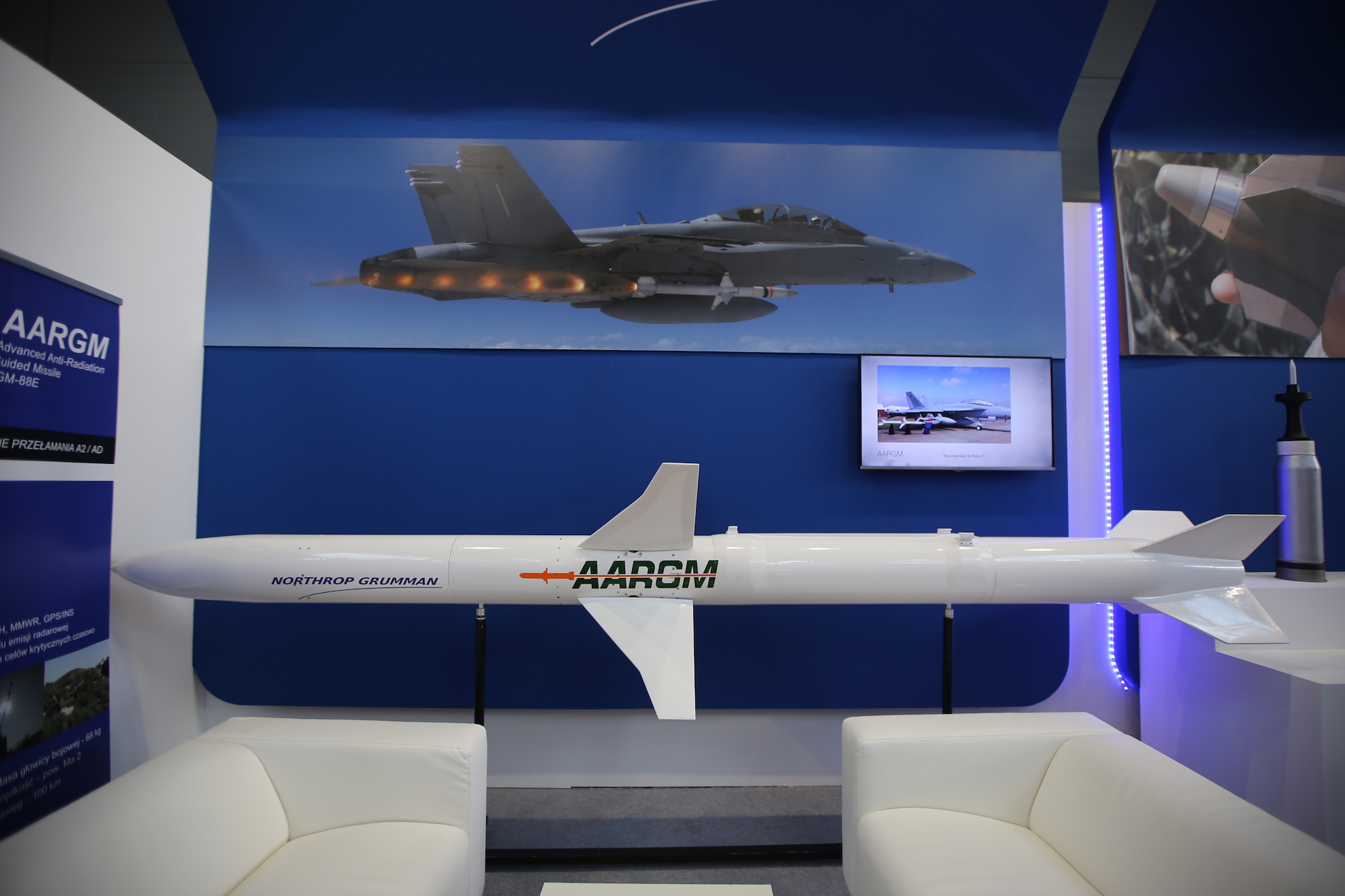AARGM Anti-Radiation Missiles for Poland

The Polish Ministry of Defence has planned a procurement of the AARGM anti-radiation missiles. The Ministry recently told Defence24.pl that a Letter of Request for Price and Availability, has been sent to the US Government, with regards to both the AARGM missile, as well as to its Extended Range (AARGM-ER) variant.
The decision assuming that Poland would acquire the AGM-88E AARGM missile would mean that the Polish F-16 Jastrząb jets would be yet another platform in Europe capable of utilizing this weapon. The Italian Air Force has been the sole user of this missile in Europe so far, as Aeronautica Militare has been one of the AARGM project participants, alongside the US Navy. Germany, on the other hand, has expressed its interest in potential acquisition of the missile in question. Meanwhile, the US Navy asked the Northrop Grumman Innovation Systems company (formerly known as Orbital ATK) to develop a new AARGM-ER variant of the missile. It is planned that its range will be doubled, comparing to today’s AARGM. Furthermore, the missile is to fit inside the weapon bays of the fifth generation aircraft. All of the above means that the AARGM programme is being continuously developed.
Czytaj też: AARGM - Evolution of Anti-Radiation Capabilities
Development of the AARGM missiles is directly related to the combat experience gathered with regards to acting against enemy radars and air defence systems. AGM-88 HARM (High-speed Anti-Radiation Missile) has been used within that role. Missiles as such are guided towards the source of electromagnetic (radar) emission. However, conflicts in Iraq and Kosovo have shown that the enemy may effectively protect his radars by disabling the sensor for the duration of the strike. In circumstances as such the rocket was losing the lock-on and often tracked a different signal source. The issue was to be resolved by making use of the heavily upgraded HARM design fitted with a new guidance system.
Evolution of the Anti-Radiation Capabilities
AGM-88E Advanced Antiradiation Guided Missile (AARGM) has been born as a result of an in-depth modernization of the HARM missile. Back in 2005 the US Navy together with the Italian Air Force, ordered development of a new missile. The solution proposed by Orbital ATK fused the propulsion, design and warhead elements of HARMs with a new guidance unit, not only making it possible to hit the radar after it is switched off, but also allowing the user to strike other time-sensitive targets. The propulsion elements and warhead come from the previous versions of the AGM-88 missile which significantly diminishes the cost of production and accelerates the development of the missile, also making it possible to upgrade the older missiles to a new standard.
And this is the path taken by both the US forces (AARGM is used by USMC and US Navy), as well as by the Italians. HARM to AARGM conversion has also been ordered by Australia, within the framework of the FMS scheme - the first contract has been concluded in 2015. According to the information Defence24.pl received from the German MoD back in 2016, the Germans are planning to modernize their HARM inventory to match the AARGM standard.
Guidance system is the primary difference between HARM and AARGM - the latter missile now uses a new multi-sensor unit for that purpose. Digital passive radar is the primary sensor used in anti-radiation engagements, making it possible to detect, identify and track the enemy radars when they remain active. As it travels towards the target, the missile also makes use of GPS/INS navigation unit to determine the target location and diminish the risk of erroneous lock-on or loss of contact. Millimetre radar is used in the terminal phase of engagement, to precisely detect and identify the threat, not only when it comes to radars but also in case of air defence shooters or other targets that may bear a prioritized relevance.
AARGM may also be used to act against targets different than radars, if the position of those targets is known. Thanks to a range of approximately 110 km and to the fact that the missile travels at Mach 2, it may be used to eliminate a wide range of threats. The target is destroyed by a 65 kilograms HE warhead fitted with a proximity fuse.
Introduction of the AGM-88E AARGM missiles into the inventory of the US Navy in 2012, for the F/A-18E/F Super Hornet and EF-18G Growler fast jets, has not brought development of this system to a closure, as the missile is being continuously modified, so that it offers a proper response to the newly emerging contemporary threats. Back in 2016 work began to develop a new version of the missile, named AARGM-ER (Extended Range).
This version of the missile is to have a doubled range of up to 250 kilometres and it is to travel at speeds that would make it possible for it to reach targets at a distance of 200 kilometres in time that is needed by the standard AARGM to neutralize a threat at a launch distance of 100 kilometres. The new missile is to offer better resistance to jamming and enhanced effectiveness against new, complex and newly emerging threats, as the DoD FY2018 Budget Request reads. At the same time, the size of the missile is to make it possible to carry it as an internal payload in the F-35’s weapons buy. In the future the F-35 would complement or maybe even replace the F/A-18 and EF-18 platforms within the scope of SEAD/DEAD scenarios. Tailoring the missile to fit the F-35’s internal bay may also be an advantage for the users of this jet around the world.
The requirements would be met through replacement of the front control surfaces with control fins that would diminish the size, drag and enhance lift to extend the range of the missile. At the same time, the modular nature of the weapon is to make it possible for the designers to rapidly finalize this ambitious project that requires replacement of the propulsion and much of the missile design itself, but still makes it possible to utilize the current warhead and guidance unit. The FY2019 Budget Request Department of Defense assumes that AARGM-ER would reach Initial Operational Capability in 2023.
AARGM for Poland
The decision made by Poland to acquire the AARGM missile and the AARGM-ER modernized version, should such course of action be accepted by the US Government, would provide the Polish Air Force with a range of new capabilities. Not only can missiles as such be used to suppress and destroy the enemy air defence system, as they could also be employed to destroy other critical targets at a distance of around 110 kilometres (basic variant of the missile). The AARGM missile itself also acts as a passive sensor, until it is launched.
At the moment Italy is introducing the AARGM missile into their inventory. Rome participated in financing and implementation of the programme, jointly with the US Navy. In April 2018 AARGM was launched from an Italian Tornado ECR jet for the first time. The Germans are also planning to introduce this missiles on Tornadoes. The German aircraft currently utilize the HARM missile, similarly to the USAF jets. AARGM would then become a NATO standard in two of the most important European allied countries responsible for SEAD operations. Meanwhile, Poland plans to acquire this type of armament as well.

AARGM is currently integrated on Hornets, Super Hornets, Growlers and Tornadoes. Poland would become the first country operating the AARGM-capable F-16s. The US Air Force and other air forces that operate the F-16 still utilize the AGM-88 HARM missile.
The above would mean that the Polish F-16C/D Block 52+ would become the first AARGM-integrated Fighting Falcons. However, as AARGM is largely reminiscent and backwards-compatible with HARM, as the representatives of the manufacturer emphasize, the integration is going to be fairly easy and inexpensive. Proper synchronization of the avionics software would be the primary task within that regard, so that the jet remains able to fully utilize the AARGM missile’s capabilities. This applies especially to the passive radar warning receiver capability and the option of changing targets or creating no-engagement zones or no-engagement object lists.
Within the context related to the SAM systems of the potential adversary in the Eastern European theatre, the anti-radiation capabilities of the AARGM missile would translate into enhanced operational capabilities of the Polish F-16 Jastrząb jets. Potential introduction of the AARGM-ER missile into the inventory may constitute yet another step towards reinforcement of the Polish Air Force’s potential, when it comes to the operations carried out in the A2/AD scenario context.

WIDEO: Defence24 Days 2025: Premier Defence & Security Conference in CEE